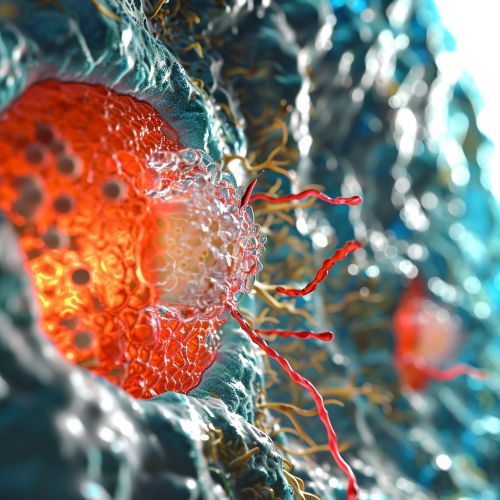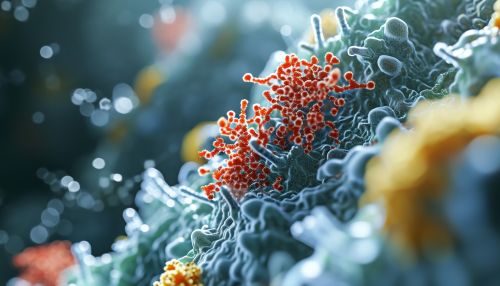Sodium-potassium pump
Overview
The sodium-potassium pump, also known as Na+/K+-ATPase, is a type of active transporter found in the plasma membranes of many animal cells. This pump plays a crucial role in maintaining the electrochemical gradients of sodium and potassium ions across the cell membrane, which is fundamental to a cell's function.


Function
The primary role of the sodium-potassium pump is to maintain the cell's resting potential, enable action potentials in neurons, and uptake of nutrients from extracellular fluid. It does this by moving three sodium ions out of the cell for every two potassium ions it moves into the cell. This action is driven by adenosine triphosphate (ATP), hence the name Na+/K+-ATPase.
Structure
The sodium-potassium pump is an integral membrane protein, composed of two main subunits: the alpha and beta subunits. The alpha subunit spans the membrane and has binding sites for sodium, potassium, and ATP. The beta subunit is thought to help stabilize the alpha subunit and is necessary for the pump's activity.
Mechanism of Action
The sodium-potassium pump operates through a process known as active transport, using energy from ATP to move ions against their concentration gradients. The pump goes through several conformational changes to transport the ions across the membrane. This mechanism is often referred to as the "Post-Albers cycle".
Role in Health and Disease
The sodium-potassium pump is essential for maintaining normal cell function, and disruptions in its activity can lead to disease. For instance, mutations in the genes encoding the pump's subunits can cause neurological disorders. Additionally, the pump is a target for several drugs and toxins.
